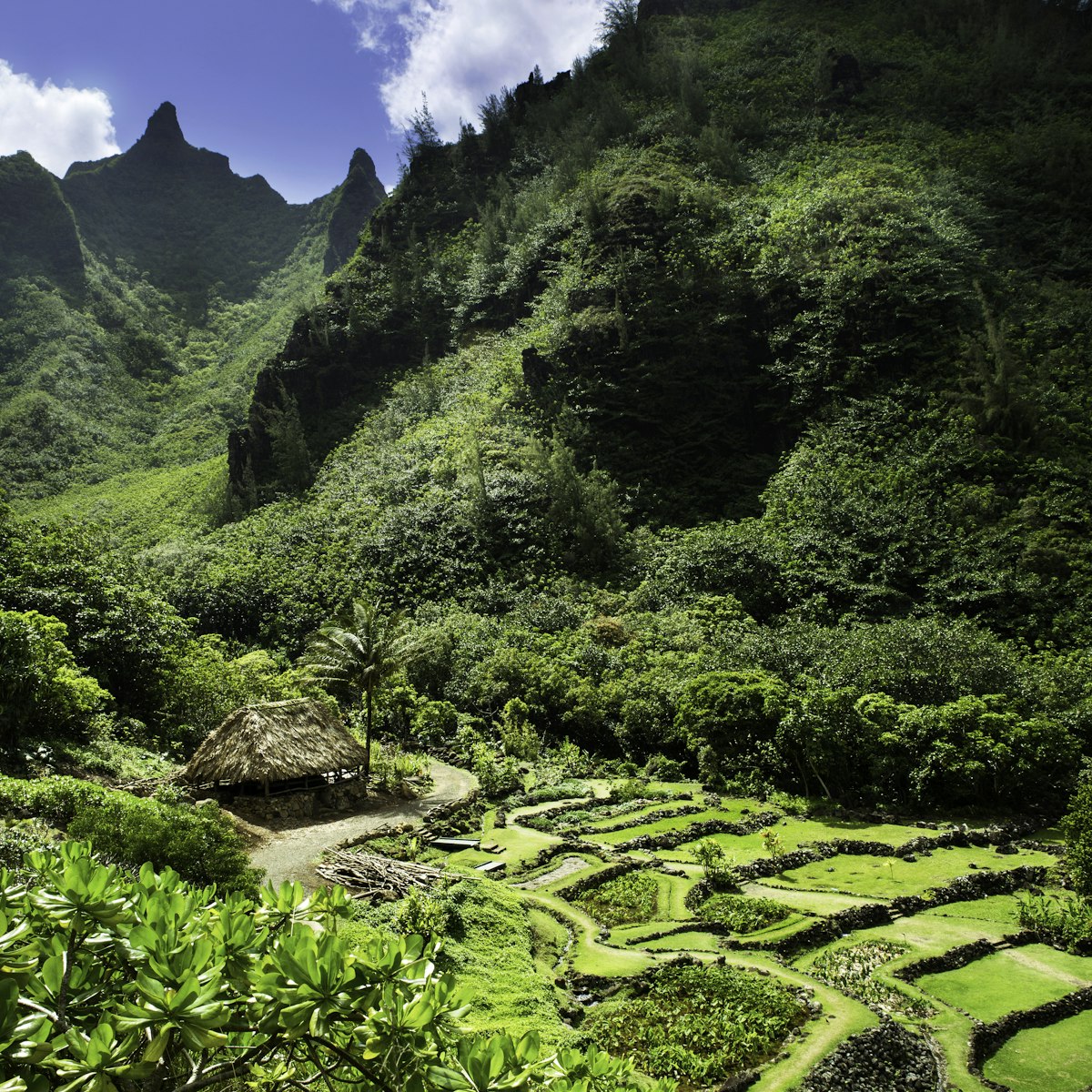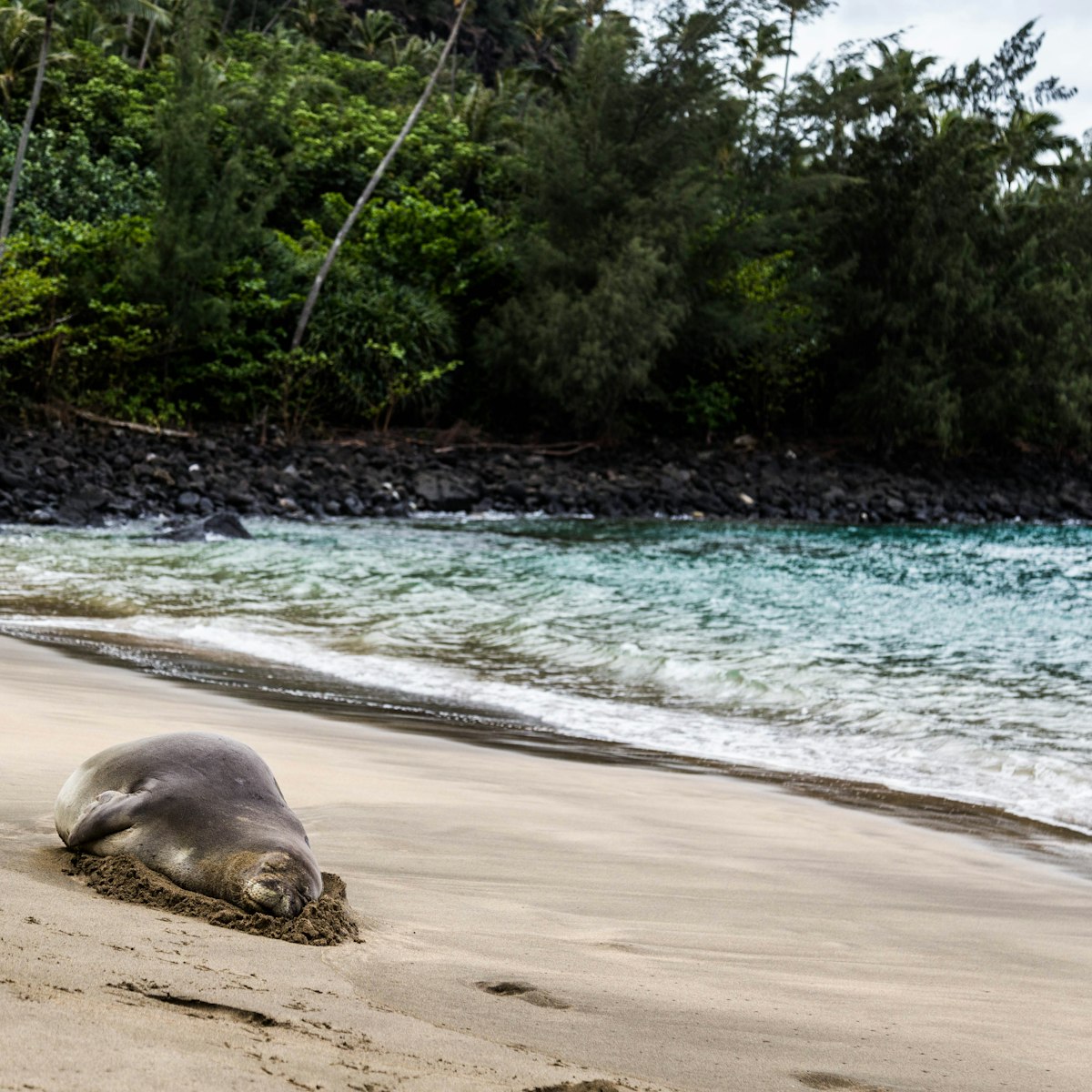The gloriously scenic wildlife refuge that marks the northernmost tip of the major Hawaiian islands protects both nesting seabirds on the coastal cliffs and marine mammals in the waters offshore. Visitors can only access a small area, where Kilauea Point holds a photogenic lighthouse, but the views are exhilarating and terrific informative panels explain the species on show.
To your right as you follow the three-minute trail from the entrance station to the lighthouse, the steep slopes of neighboring Crater Hill are usually a-flutter with darting white shapes. Thanks to predator-proof fencing, it’s a safe habitat for red-footed boobies. Laysan albatrosses, by contrast, prefer the flatter clifftops to the west, while you’re also likely to see Pacific golden plovers, red-tailed and white-tailed tropic birds and the nene, the threatened species of Hawaiian goose. Helpful docents lend out free binoculars. Out to sea, whales breach in winter only, but spinner dolphins can be glimpsed year-round.
Built in 1913, the 52ft Kilauea Lighthouse was decommissioned in 1976, though it was shut down during WWII to help the island avoid the attention of Japanese bombers. Free tours to the top are offered on Wednesday and Saturday, hourly between 10:30am and 2:30pm. Numbers are limited, so sign up as soon as you arrive.
To reach the refuge, turn oceanward off the highway at Kilauea’s gas station, then turn left onto Kilauea Rd and follow signs for 2 miles.








